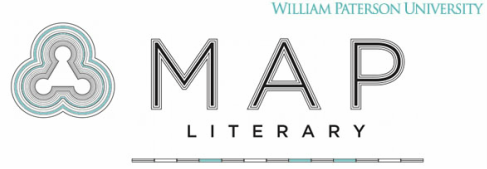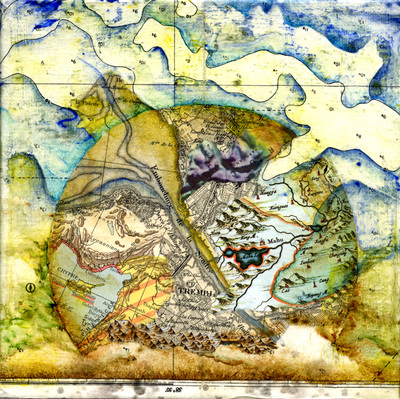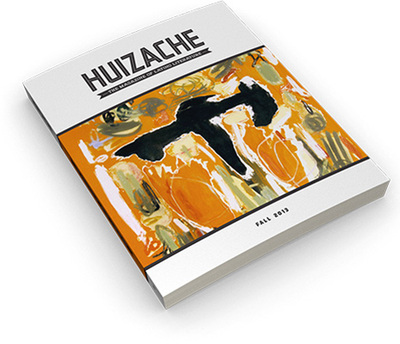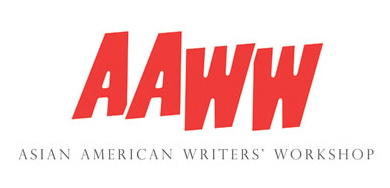LOLA GRACE
Natural Birth
When her less than ordinary pregnancy finally ended after 18 hours of labor, Penny Foster did not surprise her obstetrician by giving birth to a twenty inch human foot. The foot was healthy and self-sustaining, but, despite an Apgar score of ten, did not otherwise appear to be an average newborn. That her doctor betrayed no surprise disturbed the young mother. After closing the door to her room and sitting down on the edge of her bed, the doctor admitted to Penny that a report had come into the hospital just moments after Penny had gone into labor. Women from 13 countries on four continents had already given birth to varying oversized human parts: an upper arm, a neck, a lower jawbone and chin, an abdomen (diaphragm included). The governments of six of these nations had already conversed and determined an official course of action.
Importantly, none of the children had been discovered and registered in the months prior to birth. No sonogram recorded anything unusual—or if it did—then the conspiracy involved more than just the general practitioners and obstetricians. None of the women were encouraged to keep their children, via financial compensation or other means, as none of them were aware that they were not about to give birth to a healthy, human, whole infant.
At the request of the women involved—for all the others had been afraid, appalled, or revolted by the event—the government had agreed to salvage the parts and bring them to a central facility for further investigation. Even this decision was made hours into Penny’s labor—the preliminary “discoveries” and decisions having happened hours before. The first was made by a midwife from Minsk who had confirmed the non-singular nature of the phenomenon when, immediately after helping to deliver twin elbows, he called a doula in Sao Paolo to find that she had just brought a brand new buttocks into the world.
Their reports were soon coupled with others and soon the authorities of these states were on alert for future events. Speculation was varied: it was an invasion, an apocalypse, a curse, or the inevitable result of human evolution. By the time Penny’s water broke, the public assumed—some with fear, some with excitement, and many with both—that the governments had pretty much decided to try to see if all the parts could be put together. Some wondered whether there might be a pretty good chance that at least one part wouldn’t have made it—which only encouraged the conspiracy theorists: such a thing, they said to TVs and tablets, would have never been allowed to happen.
Like the others, Penny was told that her disgust was natural. Penny’s doctor said that she should not feel ashamed: they would take the foot, take care of the foot, that it wasn’t her fault and shouldn’t be her burden. Unlike the 13 who came before and the 19 who would come after, however, Penny said no. They did not immediately steal the child from her. They took her to a private ward inside the hospital and left her alone there with the foot, two-dozen doctors, thirty two members of the national guard, and fifty-seven representatives of the federal government, including agents from the CIA, FBI, NSA, INS, OPB, ATF, DEA, DOD, and IRS.
Meanwhile, the predictable—perhaps predetermined—team of scientists was gathered and flown to the specially chosen facility, where together they worked to investigate and then combine the various “newborns.” With them were six of the so-called Titan Mothers: the ones who gave birth to the brain, the heart and ribs, the face, the stomach, the penis and the vagina. At first, the double genitalia made the scientists believe that they had the materials for two giants (which produced a small scuffle between the sister of the penis’ mother and the husband of the vagina’s); after some fierce stitching, grafting, and gluing, however, the scientists managed to attach the brain to the skull to the lower jaw to the face and thereby found that the giant could exist with neither sexual organ—for the time being, anyway. In fact, once everything was in place, save the genitalia and the missing foot—which like all the parts of any newborn, continued daily to grow—the being became animate. Unfortunately for the scientists, it was the enormous baby they thought it was. It was therefore at its conventional stage of postnatal development and thus of entirely no use with regard to informing them further about the requirements for its own care.
Eventually, after 14 months of controversy and protest, a global vote decided to raise the giant as a girl, to call it Gaia, and to attach the vagina—what thousands of activists world-wide argued were and should be historically remembered as three unrelated events (see Gerald Wilson’s history, “Organs of Control: the Baby Titan Affair” for more on this episode). The protests bred others, as angry libertarians, anti-vivisectionists, and dumbfounded trans activists crowded intersections and corners for years to come.
Meanwhile, Penny Foster continued to raise her foot, paring its nails, cleaning its sole, shodding it properly to avoid its injury. Though no one questioned her dedication to her child, the conclusion of the “organ issue,” in addition to the child’s increased impulse toward ambulation, freed up sufficient social mental space to prevent Penny from continuing her life as normal. She was confronted: her actions were portrayed as antisocial if not criminal; classical or archaic versions of a citizen’s duty (depending on one’s perspective) were invoked and deployed to foment public unrest and coerce government intervention. These were not the only voices, but they were the more captivating, fungible. She went on The View, Letterman, and finally, Oprah. “I love my child,” she explained. She didn’t want it to lose its independence, to be influenced by a group of other mothers and fathers and doctors that “don’t care about it for itself—for what it is and where it comes from.” Nevertheless, after an injunction and a brief legal battle, the foot was taken from her (in exchange, they offered her the penis, an offer to which she did not respond). Alone, both yearning for her child but repulsed by the idea of seeing it in its new context, Penny left her home, and those she previously called family, and disappeared. Unnoticed and unwatched, she eventually found a place in a rope-making and leather-tanning factory that had recently quadrupled its net worth by becoming the exclusive cordovan for Earth’s biggest baby.

Lola May Grace, the second semi-fictional byproduct of the memory of Lola Lewis and Grace Nelson, works and resides in a small house off Rogers Street in Bloomington, IN.









